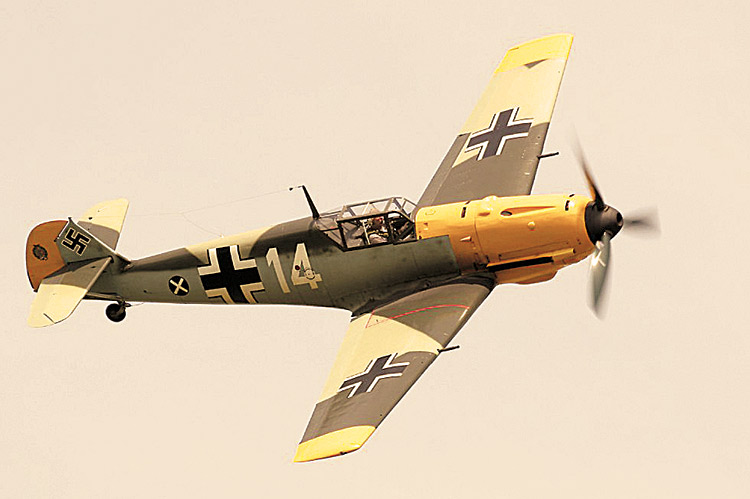INDIAN ARMED FORCES CHIEFS ON OUR RELENTLESS AND FOCUSED PUBLISHING EFFORTS

The insightful articles, inspiring narrations and analytical perspectives presented by the Editorial Team, establish an alluring connect with the reader. My compliments and best wishes to SP Guide Publications.

"Over the past 60 years, the growth of SP Guide Publications has mirrored the rising stature of Indian Navy. Its well-researched and informative magazines on Defence and Aerospace sector have served to shape an educated opinion of our military personnel, policy makers and the public alike. I wish SP's Publication team continued success, fair winds and following seas in all future endeavour!"

Since, its inception in 1964, SP Guide Publications has consistently demonstrated commitment to high-quality journalism in the aerospace and defence sectors, earning a well-deserved reputation as Asia's largest media house in this domain. I wish SP Guide Publications continued success in its pursuit of excellence.
Messerschmitt Bf 109 – Germany’s Finest
The Messerschmitt Bf 109 needed every ounce of performance it had to take on the British fighters, especially the Spitfire and the Hawker Hurricane during the Battle of Britain

The narrative of fighter operations during the Second World War is dominated by the Supermarine Spitfire, the darling of the Royal Air Force, and the North American Aviation P-51 Mustang, flown by the United States Army Air Forces. Less celebrated, probably because history is written by the victors, is the Messerschmitt Bf 109 – a German fighter aircraft. The Bf 109 was the backbone of the Luftwaffe’s fighter force and accounted for as much as 57 per cent of all German fighter aircraft produced during the War. The all-time highest scoring fighter ace, Major Erich Hartmann, flew the Bf 109 and was credited with 352 aerial victories. In fact, this deadly fighter was the favourite of the three top-scoring German aces of World War II, who claimed 928 kills among them. It also held the record for the fighter that brought down the most Allied planes.
The Bf 109 was the first true mass-production fighter and probably the most produced fighter aircraft in history, with almost 35,000 built in all. It was designed by Willy Messerschmitt while working at Bayerische Flugzeugwerke, hence the designation Bf. In July 1938, the firm was reconstituted as Messerschmitt AG with Willy Messerschmitt as Chairman. The first Bf 109 prototype flew in September 1935, ironically powered by a 695 hp British Rolls-Royce Kestrel engine, as German development of lightweight military aero-engines was prohibited under the Treaty of Versailles. However, a German engine was secretly developed side-by-side. The propeller-driven fighter was blooded in operations in 1937 during the Spanish Civil War and was extensively used by the Luftwaffe till the end of World War II. Initially designed as a fighter interceptor, its superlative performance was demonstrated in public at the 1936 Berlin Olympic Games. The following year, the professional aviation world marvelled as five Bf 109s participating in an international flying meet in Zurich exhibited outstanding speed, climbing, diving and manoeuvring performance. On April 26, 1939, a specially modified version, the Me 209, set a new speed record of 756 kmph, a record that remained unbroken until August 1969.
The Messerschmitt engineers kept their design simple, aiming to concentrate most loads in the firewall and minimise the number of separate parts in the aircraft. They decided to mount the most powerful engine they could on the lightest and smallest possible airframe and make the resulting aircraft easy to build and repair. And in this, they succeeded in great measure. Yet, despite its lightweight construction, the Bf 109 was one of the most advanced fighters of the period on account of its all-metal monocoque construction, closed canopy and retractable landing gear. It was powered by a single Daimler-Benz DB 605A-1 liquid-cooled inverted V12, 1,455 hp aero-engine which gave it a maximum speed of 640 kmph and cruise speed of 590 kmph. It was ultimately produced in over 100 variants for a variety of combat missions.
The Messerschmitt Bf 109 needed every ounce of performance it had to take on the British fighters, especially the Spitfire and the Hawker Hurricane that formed the bulk of the fighter fleet during the Battle of Britain. The British always claimed that the Spitfire was superior and the kill ratio would seem to bear this out. However, most of the dog fights took place over London where the Bf 109s were near their maximum range and could remain in combat for just 10 to 20 minutes before having to withdraw. In fact, a number of Bf 109s ended up in the icy English Channel, their hapless pilots having run out of fuel.
The Bf 109-E that entered production in 1938 was the standard Luftwaffe day fighter. Its two machine guns and two 20mm cannons gave it greater firepower than the RAF fighters. Apart from its limited fuel capacity, the main drawback of the Bf 109 was that it was very tricky to take-off and land. By some estimates as many as ten per cent of all Bf 109 losses were on account of takeoff and landing accidents. It was also outgunned by the Spitfire in the later stages of the War. Nevertheless, with the engineers constantly coming out with improved variants, the final Messerschmitt Bf 109-K had phenomenal climbing performance that its adversaries could not match. The Luftwaffe was defeated not by any technical inferiority, but because of lack of fuel supplies and being greatly outnumbered.
Although production of the Messerschmitt Bf 109 in Germany ended with World War II, it continued for some years in Spain. And the final twist in the epic Bf 109 tale happened when the Israelis, unable to acquire fighter aircraft from other sources, bought Bf 109s and used them in combat in 1948. Thus was the Jewish nation, which was formed as a direct result of Nazi Germany’s persecution of the Jews, was ironically defended by a Nazi-built fighter aircraft.





